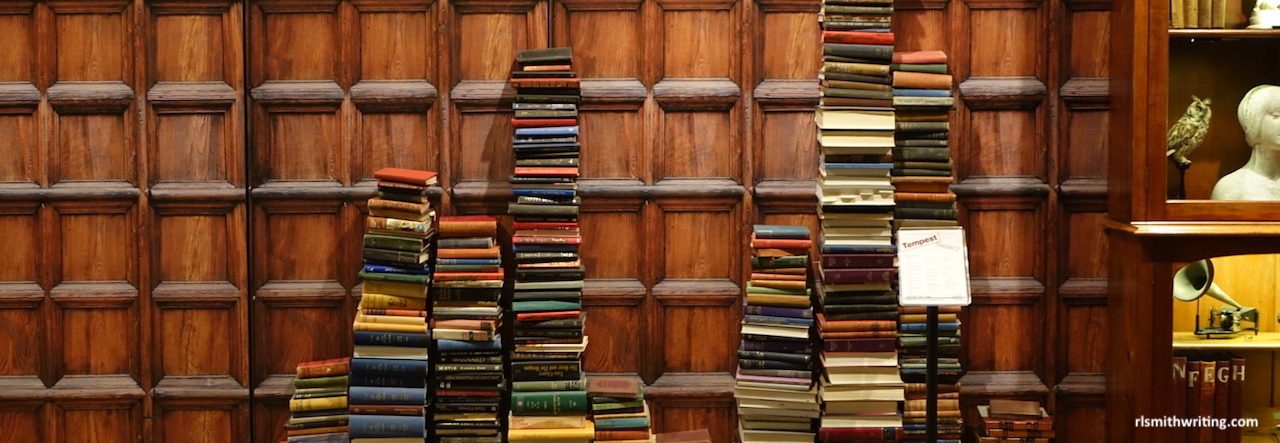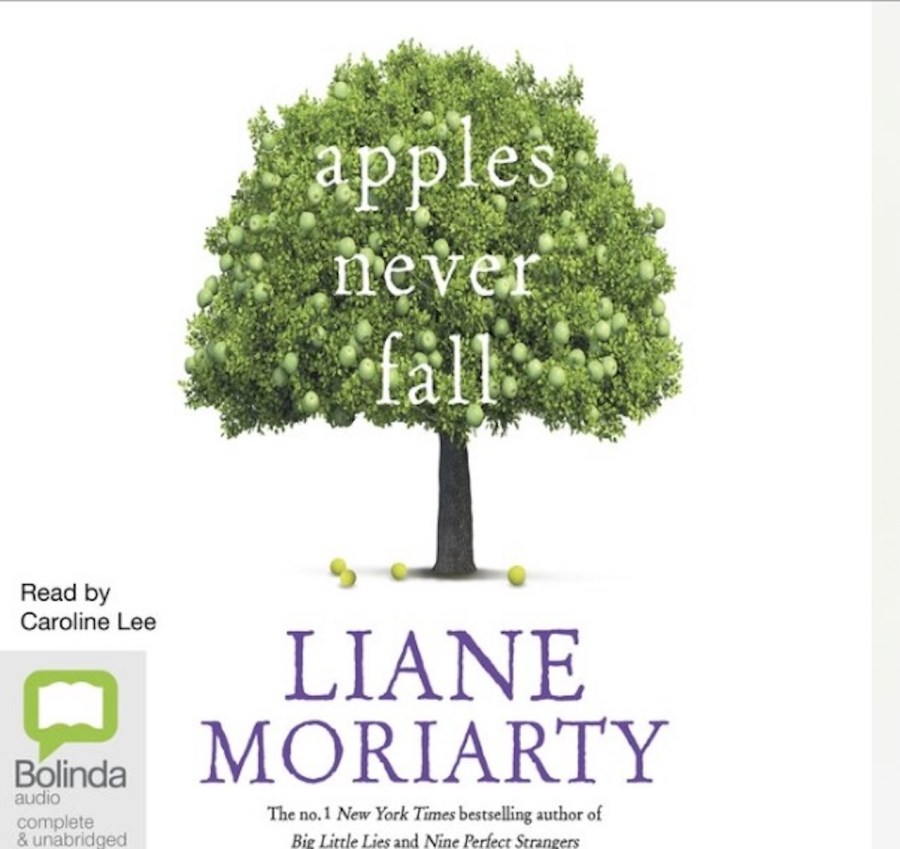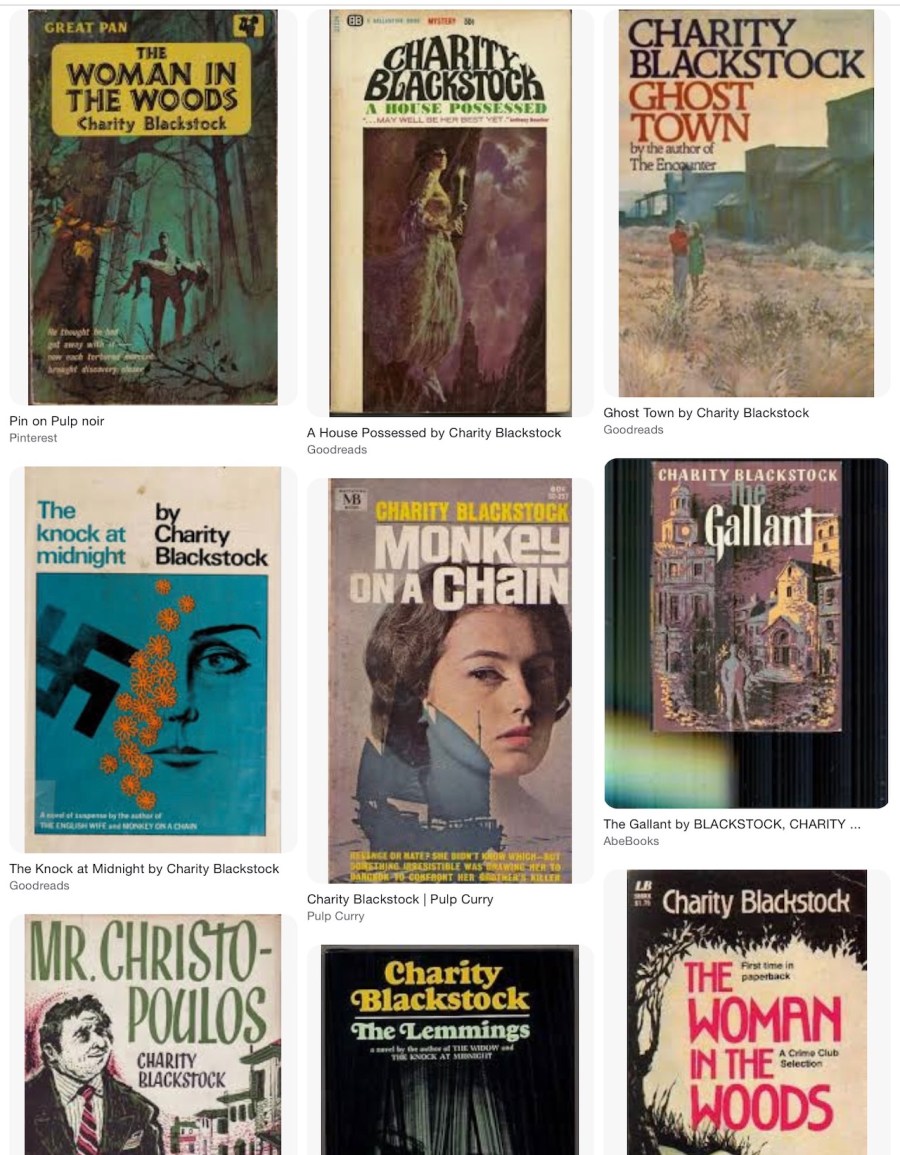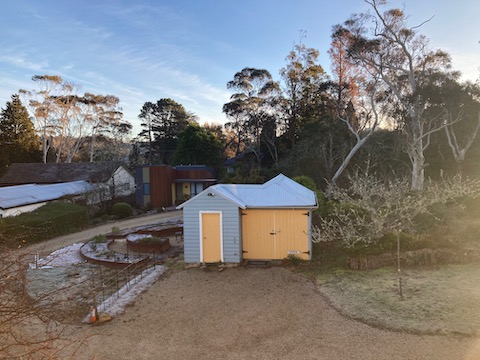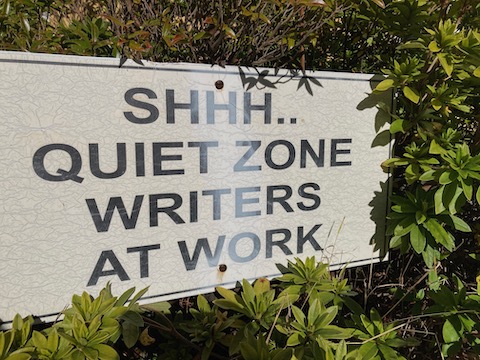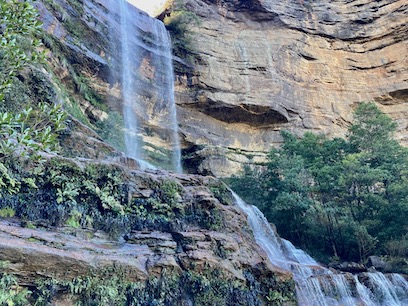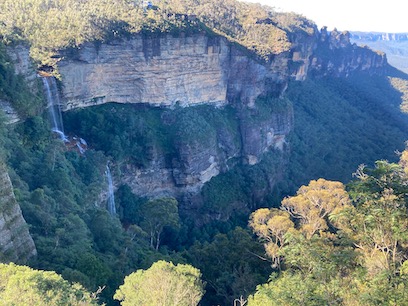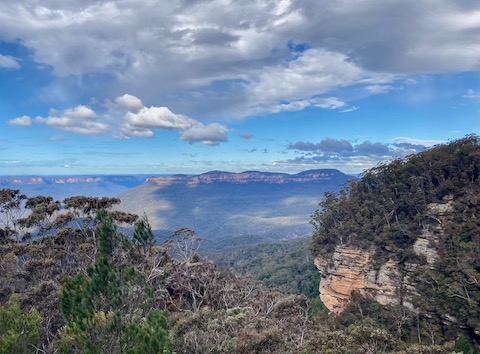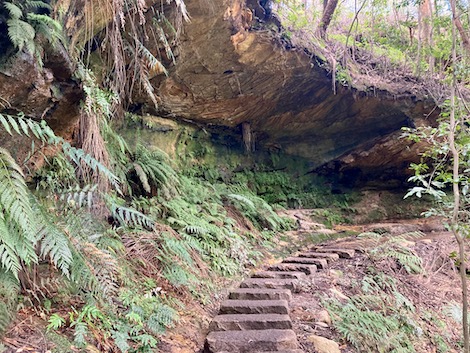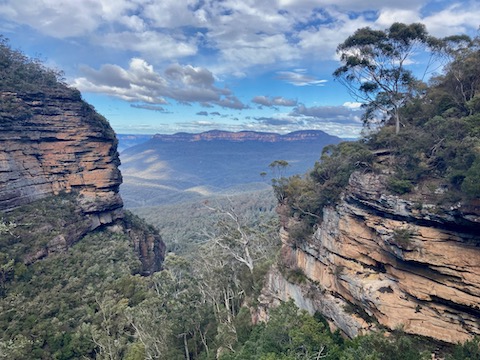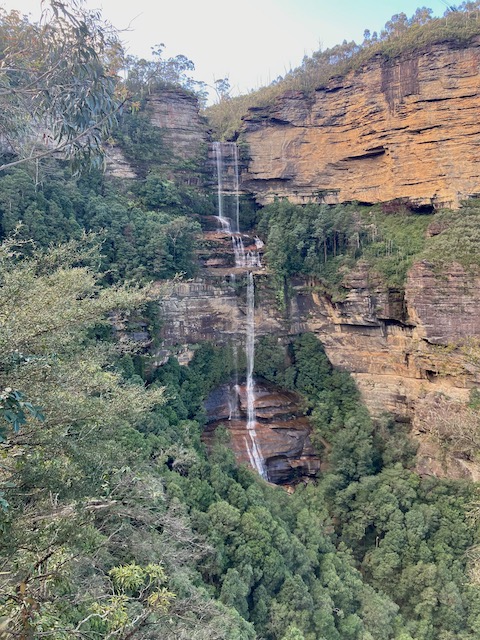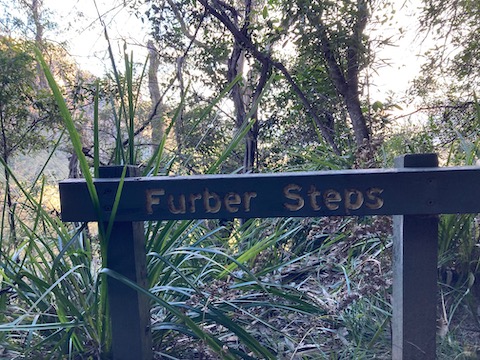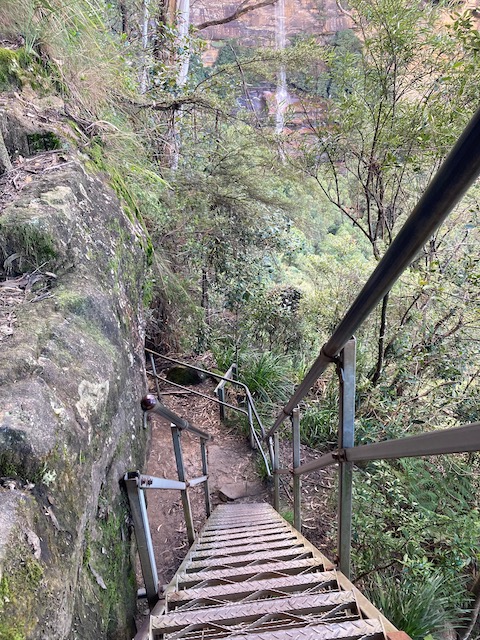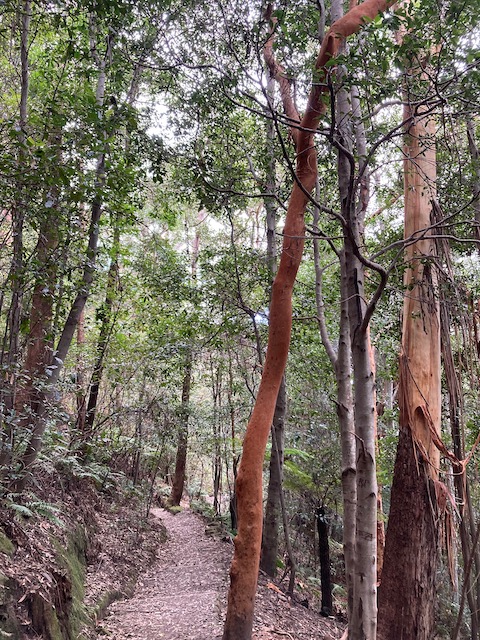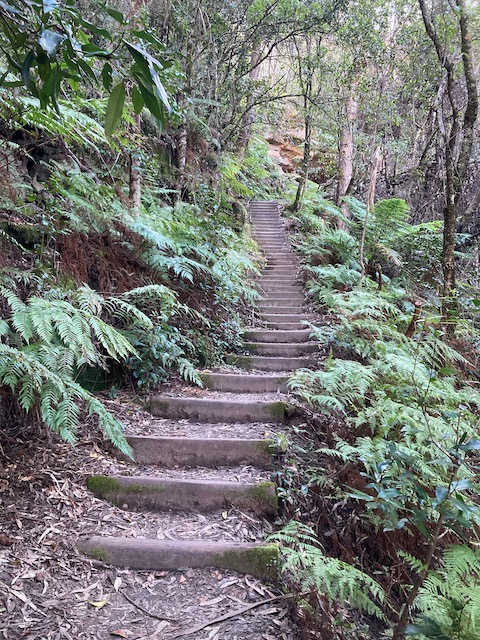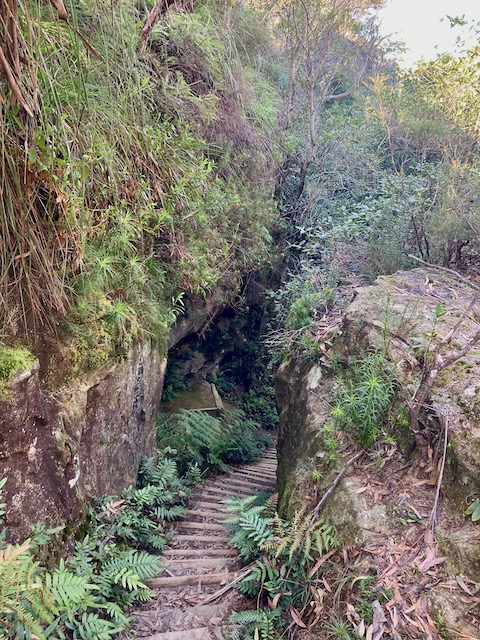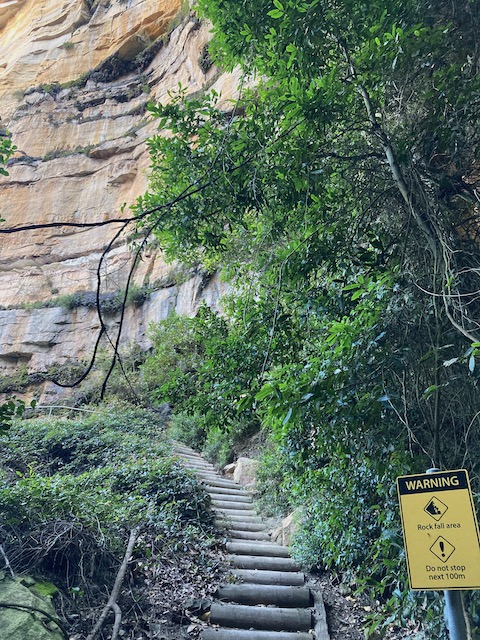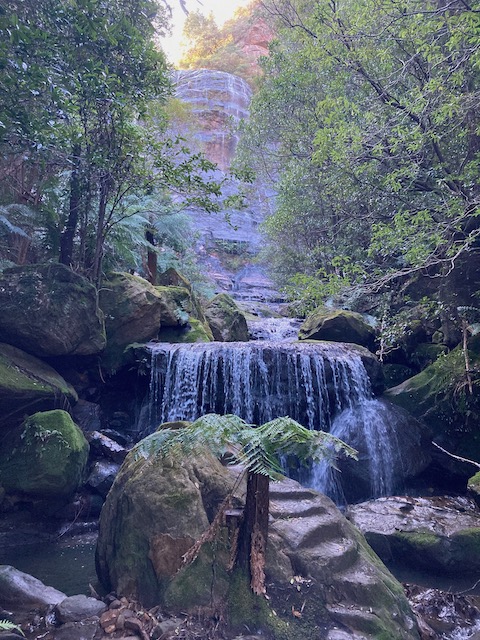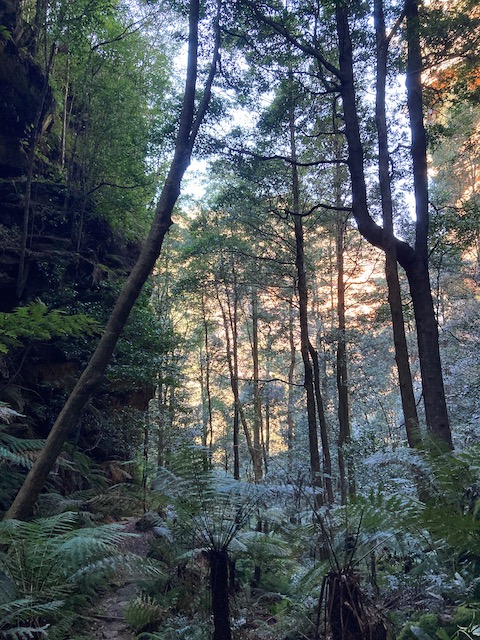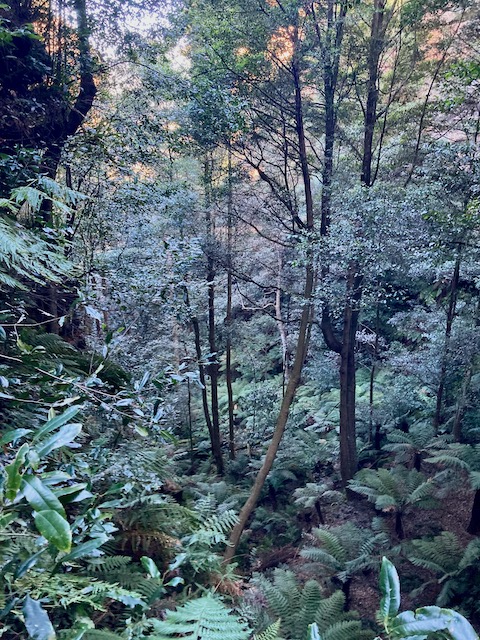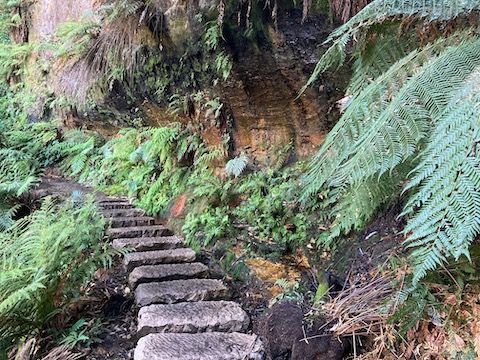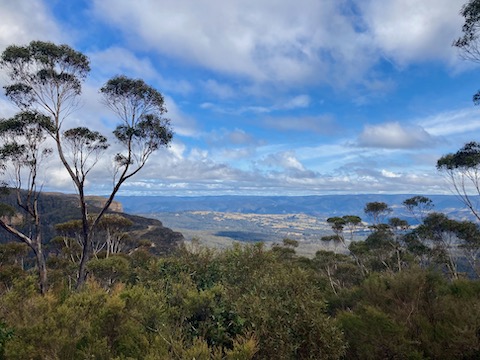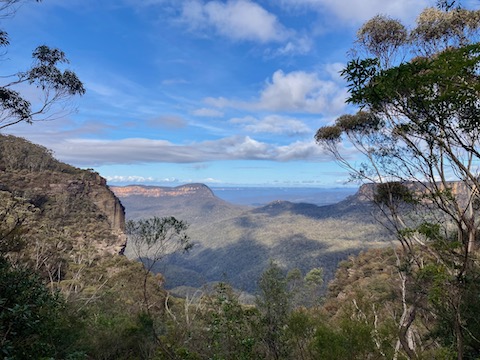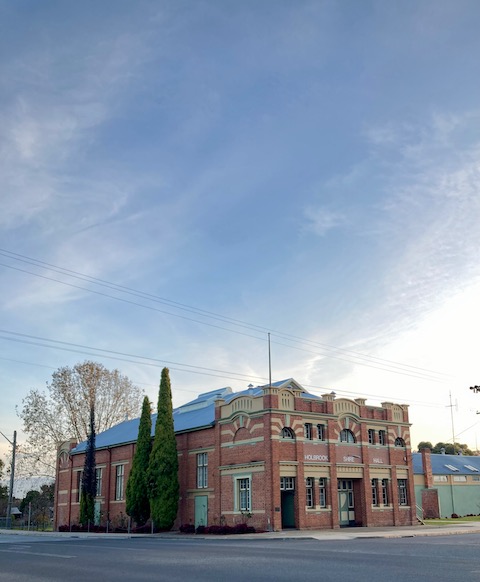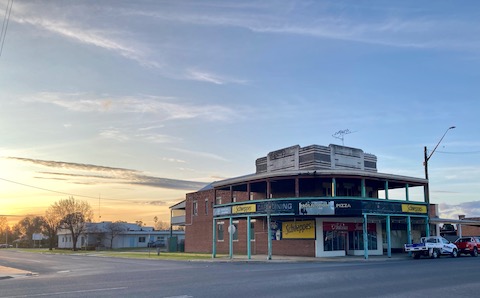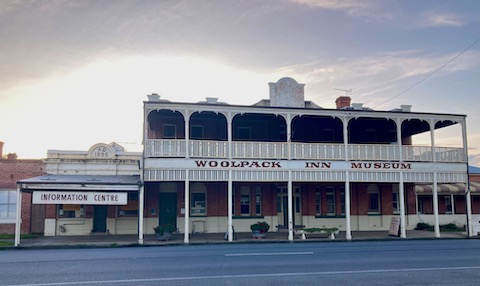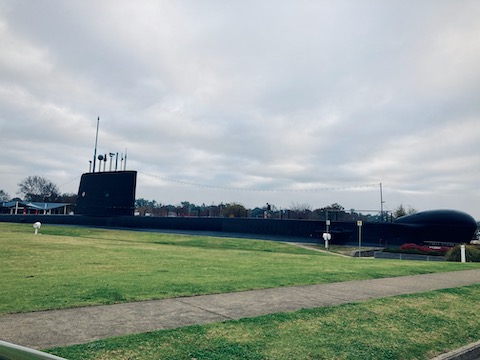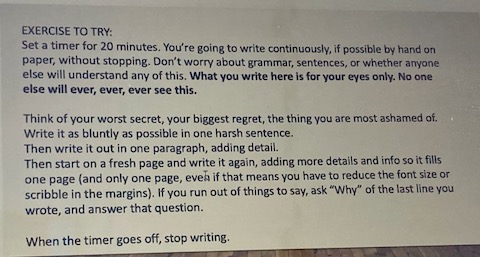Sunday 12th June Day 1: Road Trip
Old mate and I went for a walk in the rain before I dropped her off with friends, packed up Pearl and turned her nose up the Hume toward Katoomba . I listened to the beautifully crafted Beekeeper of Aleppo by Christy Lefteri on my four hour drive to my overnight stop at Holbrook – best known for its resident Oberon-class submarine, a curious addition for a town 250km from the ocean. Apparently the towns namesake was a decorated wartime submarine captain.
Monday 13th June Day 2 : Varuna
Words: 29; walk: 3.34 km
I left sleepy Holbrook at 8am and drove north stopping only for petrol. Art Malik finished reading the Beekeeper of Aleppo just as I approached Katoomba.
After being shortlisted for a Varuna Fellowship in 2020, I was fortunate to be invited to a weeks residency. At the time I couldn’t go for obvious reasons (COVID lockdowns) and thought I’d lost the opportunity until I was contacted again earlier this year and offered a spot in June. I arrived as excited as a puppy at a picnic.
I unpacked my gear into the Bear Room overlooking the comings and goings of a shed labelled ‘office’ and a stand of what appeared to be either ghost or lemon scented gums. I wanted to shake off the hours of driving so headed out for a short walk in the direction of Cascade Falls. Very soon there were a lot of ‘oh wows’ going through my head as I turned corner after corner of spectacular scenery.
In the evening we gathered in the library room for introductions. Six writers – poets, and authors of young adult fiction, speculative fiction, gothic and crime fiction. It felt almost decadent to talk about little except writing over curries – something that rarely happens in non-writer company. The creative vibe was inspiring and I confess, my mind did keep slipping to how great a setting the house would be for a work of crime fiction…maybe one day.
It’s fair to say my creativity has been patchy of late. The novel I am working has been in progress for longer than I care to admit. I estimated I had about 20,000 words to finish the first draft and set myself a target to write 1,000 words in the morning, then permit myself a walk before returning to the desk to write more. I wanted to get cracking and make the most of this week.
Tuesday 14th June Day 3
Words: 2,408; walk: 4.78km
The book shelves in the Bear Room were conveniently lined with my genre – crime, suspense and thrillers…bwha…ha…haaa…and the outlook was excellent for ‘keeping an eye on things’…again great inspiration for a crime writer because we are nosy parkers. Though, I did select a tomb on Jung to prop up my laptop to symbolically inspire my subconscious.
The sun streamed through the window, deliciously warming despite the frost on the ground outside. I knocked out 1,200 words (in which I had to kill off one character) and then headed out for a walk. The Round Walking Track to Katoomba Falls takes you through lush rainforest, intermittently revealing spectacular views across the valley to the far off cliffs of the Katoomba escarpment, the Three Sisters and Wishes Leap. What a magical and inspiring location – both the house and the natural surrounds. I was definitely in my happy place.
After a couple of years of struggling to get time to write, it was so satisfying to see those words climb. We gathered by the fire in the evening and had another lovely meal and stimulating conversations. I felt quite blessed.
Wednesday 15th June Day 4
Words: 2,123; walk: 6.81km
Another perfect day dawned. The sun was shining and the air crisp. Words didn’t flow quite so smoothly this morning but I kept my bum planted till I hit 1,000 then headed out on my walk. I ambled 7km along the cliff walk to Echo Point Lookout and the Three Sisters then on towards Leura Falls to Carrington Park, cutting back through the town of Katoomba to Varuna. Walking alone through the forests was great inspiration as large parts of my novel are set in the forests of East Gippsland.
Thursday 16th June Day 5
Words: 970; walk 6.85 km
I was fidgety in the morning so set off on my walk a bit early and returned to pick up where I had left off the previous day to visit the Leura Falls. Then I crossed a creek (nearly fell in) and clambered up a little used goat track up a steep wooded hill to the east side of Katoomba and wandered back to Varuna through streets lined with tiny houses. It was not such a productive day with the external world intruding on my thoughts, but I still got a little done.
We writer residents started sharing readings in the evenings after dinner. So wonderful to hear what my comrades are working on in their rooms overlooking the garden.
Friday 17th June Day 6
Words: 1,852; walk 8.42km
In the morning I continued to feel distracted which interrupted my flow, flitting from one thought to another, unable to settle into writing. I was so close to finishing the first draft, but the last two chapters were eluding me even though I knew more or less what would happen. So I abandoned my computer and headed out. It was no meander. I went deep into the forest, and myself, to gaze up at the rock formations I had looked down upon yesterday.
As I descended the Furber steps to the sound of lyre birds in the undergrowth and the sight of plant life clinging to rock faces that would make mountain climbers squirm, I contemplated the ending to the story I was working on. On the path to Echo Point along the Federal Pass track I brushed past some of the biggest tree ferns I have ever seen and touched the giant Turpentine Tree (Syncarpia glomulifera).
It is hard not to weep at such grand beauty – the big and the small of it – when you know as a race we are hell bent on destroying it. Of course what goes down must come up and the fire in my thighs may have contributed to my tears. I wrote notes for the last page of the first draft of my second book on my phone when I stopped for a breather on the way back up the 1,000 metre ascent . When I reached to Varuna in my sweat soaked clothes I sat down and wrote almost 2,000 words in two hours!
Saturday 18th June Day 7
Words 972; walk 7.52 km
I typed THE END on my first draft at 11.27 am and headed out. My intension was an easy shortish walk as my calves were feeling the stair climbs from the previous day, but the beauty of the forest draws you in. I crossed town to Carrington Park and walked the Leura Cascades Fern Bower circuit via the Amphitheatre track, a 4.5km loop with a 1,000 metre drop in elevation and spectacular waterfalls and gorgeous scenic views of the Jamison Valley – which of course you have to climb out of again. I returned via the Prince Henry cliff walk and arrived back at Varuna 2.5 hours later, happily exhausted.
It is the last night for one of our group members, so we celebrated after dinner by sharing readings late into the night from the material we had been working on, admired authors and poets. We had all relaxed into one anothers company and started to open up. I felt privileged to have gotten to know this group of talented creatives a little.
Sunday 19th June Day 8
Scene inventory of chapters 1- 3; walk 6.42 km
I woke at dawn, made coffee and sat at my desk looking out over the winter garden with cool air filtering in the open window. There was frost on the ground but the sky was crystal blue. My calves and thighs were satisfyingly tired from all the walking, which is such an important part of my process. It was my last writing day and I started a scene inventory to begin analysing my draft and answering these questions:
- are there any scenes missing?
- any important scenes summarised rather than written in detail – think character development
- left any plot elements out?
- have I summarised any key moments which should be a scene?
- have I put scenes in the wrong place?
- Have I left some elements of scenes out?
- Does the flow of the story work?
- Are there any gaps?
- Will readers follow the logic?
I stayed up high on my walk when I went out to give my legs a rest from stair climbing. I ambled along the back roads to Narrow Neck lookout and back via Cliff Drive and Prince Henry cliff walk. The five of us remaining at Varuna wandered into town and had a lovely meal at a pub in Katoomba.
Monday 20th June Day 9 – homeward bound
I awoke to a morning of mist and drizzle and realised how lucky I was to have a week of such fine weather in a mountain winter. I said my farewells and headed through the mountains and south back toward my way stop at Holbrook.
I discovered something new about Holbrook whilst I was at Varuna. A large submarine is not the towns only quirk. One of my companions was a speculative fiction writer and has been researching cryonics – the preserving of the human body and/or brain after death in liquid nitrogen for a future awakening when (if?) science works how to do it with memories and a sense of self intact. It turns out Australia’s first cryonics storage facility was recently built at Holbrook.
After arriving mid-afternoon I went for a walk along the main street and was struck by the unusual number of friendly older gentlemen getting around on mobility scooters. As with many country towns, Holbrook has a shrinking population and many empty shops on the main street, though her former glory can still be seen in the fading old buildings. The shops that remain have a distinctive 1950’s feel to them and there is a mustiness about the place. I did ask a couple of people about the cryonics centre and received pretty much the same response from all accompanied by a derisive smirk – that yes a cryonics facility had been built in the town but no one seemed to know where it was located.
What a wonderful week it has been with about 10,000 words written and 50km traversed through stunning landscapes. The writerly company and their words were exceptional, though what’s said a Varuna stays at Varuna. A heartfelt thanks to Varuna for the opportunity for a phenomenal, inspiring and nurturing week.
Tuesday 21st June – Arriving home a little changed
I left Holbrook early and drove straight through to Melbourne. The experience at Varuna has left me invigorated about my writing and determined to make an effort to carve out regular time for my creative writing life. I hope to get back there again sometime, but its nice to be home with my pal.
Photos: taken with iPhone SE (second generation)
